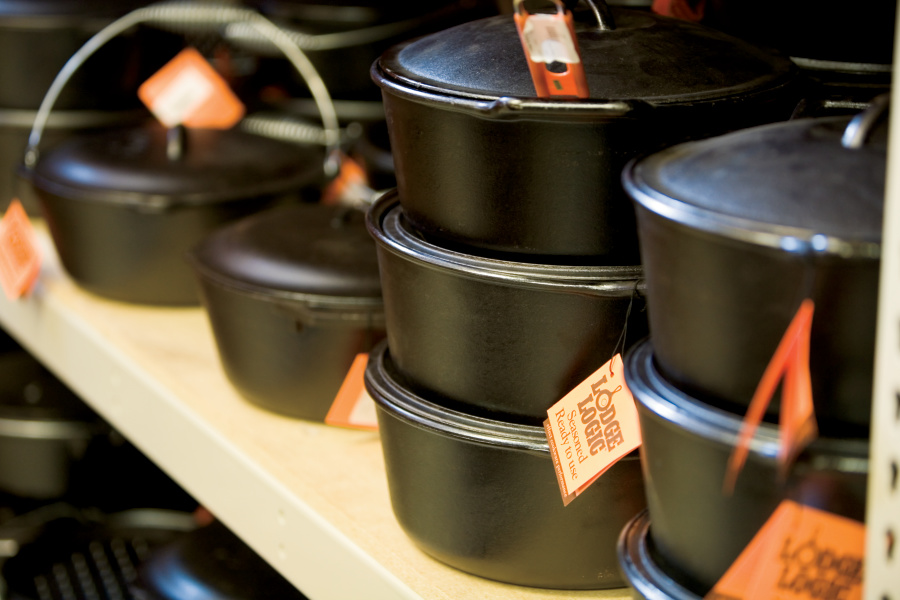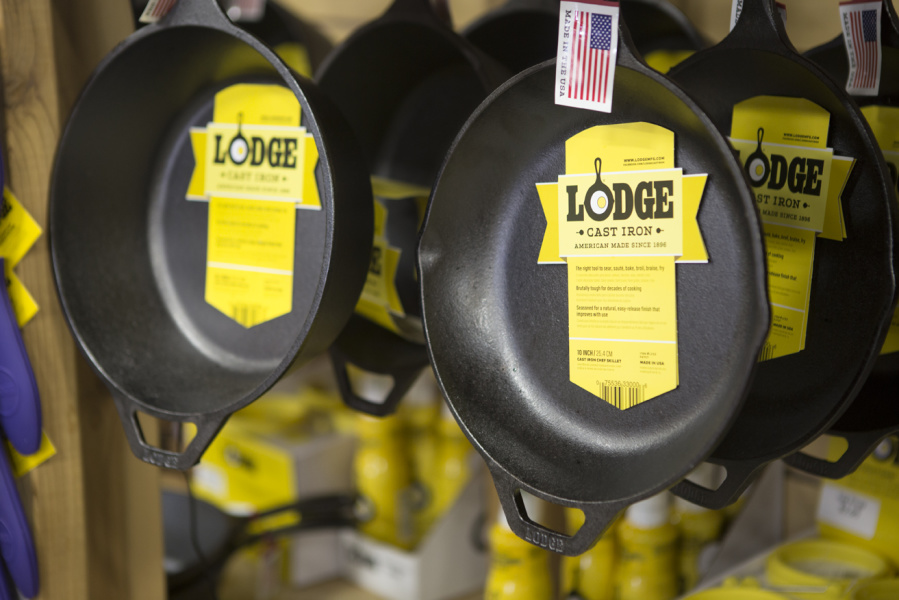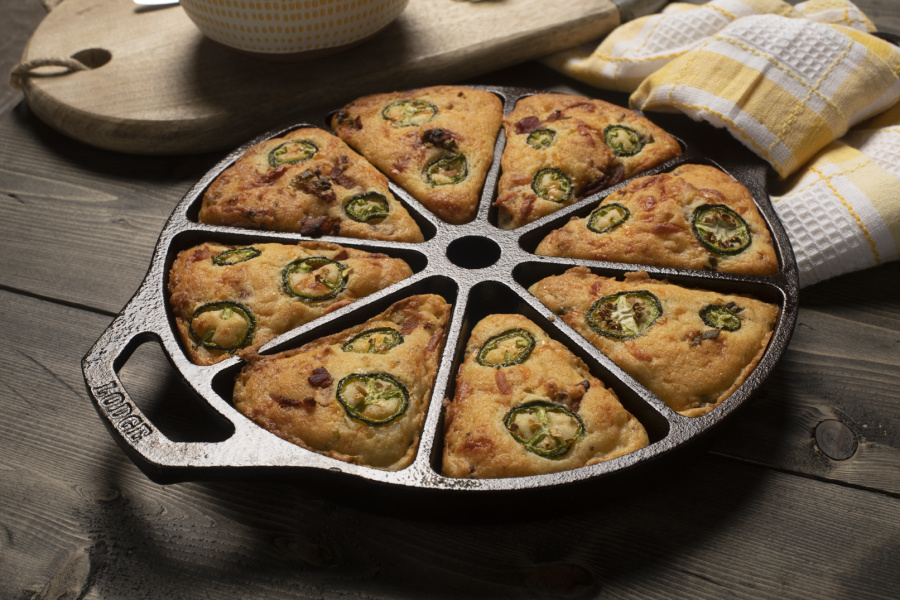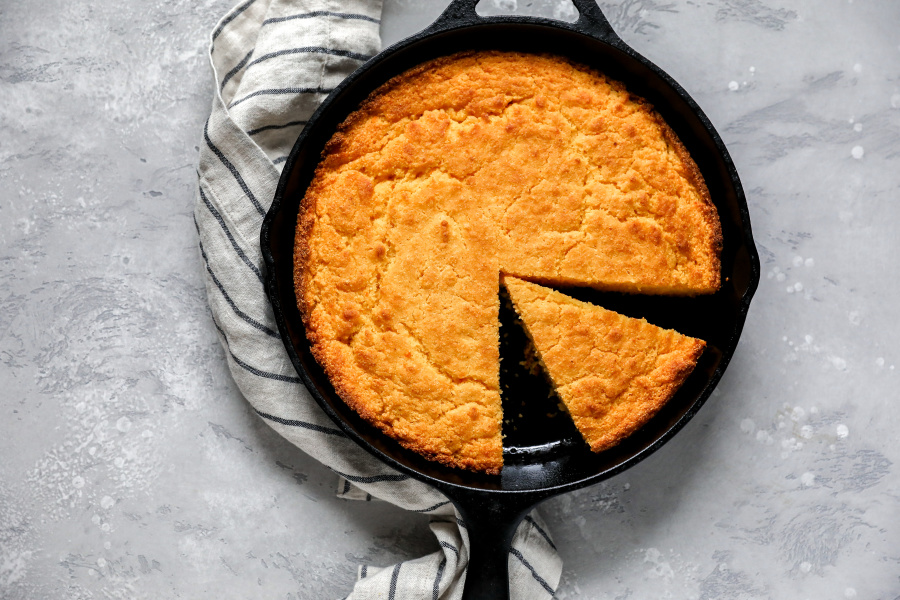Home > Lifestyle > Cooking with Cast Iron 101
Cooking with Cast Iron 101

Cast iron is naturally nonstick, made to last a lifetime, and can easily go from stove to oven to grill and back again. It does come with a learning curve, especially if you’re used to nonstick pans, but these hefty workhorses are a must-have in any home. Here’s everything you need to know about cooking with these timeless kitchen classics.
How to Cook with Cast Iron
Cast-iron skillets are impressively versatile. You can make everything from scrambled eggs and cinnamon buns to seared steaks and veggie-heavy frittatas in them. But there are a few things you need to know before diving in since cooking with cast iron is different from using traditional nonstick pans.
See more: 10 Recipes You Can Make in One Cast-Iron Skillet
Preheat your skillet.
Whether you want to make a sweet or savory dish, it’s important to preheat your cast-iron skillet for at least five minutes before adding any food to the pan. Cast iron doesn’t always heat evenly, so this ensures the entire surface heats up. Once the skillet is hot, it will maintain heat for an impressive amount of time.
Leave your food alone.
It probably sounds counterintuitive, but you don’t want to mess with your food too much after placing it in your cast-iron skillet. If you move eggs or meat around too much, too early, you’ll likely cause them to stick. When the bottom of your food comes away from the skillet easily, you know it’s time to flip or serve.
Use the right tools.
Cast iron is one tough cookie, which means you can easily use metal or stainless steel spatulas without fear of scratching it. Avoid using plastic or silicone, though, which can melt from the high heat and damage your skillet for future use.
Be mindful of acidic ingredients.
You can cook high acidity foods like tomato sauces and wine-based dishes in your cast iron skillet. But because the acidity in those ingredients can cause your pan to lose its seasoning, be mindful that you may need to re-season it before cooking it in again.
Remember that flavors linger.
If you cook a salmon dish on Friday night and want to whip up a batch of cinnamon buns on Saturday morning, you may be in for an unpleasant surprise. Cast iron takes on the flavor of what was cooked in it, so you may want to designate one skillet for savory dishes and another for sweet treats.

How to Maintain Cast Iron
You have to maintain your cast iron over time to keep it looking and working its best. Here’s how to season, clean and store cast-iron cookware for best results:
Seasoning Cast Iron
Seasoning your cast-iron skillet is a necessary step in preserving its aesthetic and maintaining its natural nonstick coating. If you notice food is beginning to stick to the bottom of your skillet, or if you bought a new skillet that wasn’t pre-seasoned, you need to go through the simple steps of seasoning first.
- Scrub the skillet with a brush in hot, soapy water.
- Dry thoroughly with a clean towel.
- Rub the entire skillet in a high heat oil, tallow or lard.
- Place it upside down in a 375-degree oven.
- Bake for 1 hour.
- Allow the skillet to cool in the oven.

Cleaning Cast Iron
The goal with cast iron is to continue building up that beautiful nonstick coating. That’s why all you need to do is wipe out your skillet with a clean, dry towel once you’re done cooking. Over time, the oils and fats you use to cook your meals in will coat the bottom of the pan and you’ll rarely need to season it in the oven. Think of it as a miniature seasoning each time you cook.
If food sticks to the skillet and you need to wash it out, use a bristled brush with warm water, but avoid the soap. Only scrub as much as necessary to dislodge the food, and thoroughly dry the entire pan to avoid rusting on the surface. You can also give the skillet another coat of oil if you’re concerned about food sticking again.
See more: The Complete Guide to Cooking Perfect Eggs Every Time
Storing Cast Iron
Many home cooks love to display their cast iron, but you can store it in kitchen cabinets as well. If you have multiple pans, place a clean dish towel or paper towel between each one to keep them clean.

Cast Iron Recipes
Cast iron can be used to make everything from beautifully seared steaks and roasts to honeyed cornbread and fudgy brownies. Here are some of our favorite cast-iron skillet recipes to inspire your next cooking adventure.
Oven Barbecued Pork Loin Chops
Bake these lean, bone-in pork loin chops in a cast-iron skillet and top with homemade barbecue sauce.
Skillet S’mores Dip
Bring the campfire inside with this tasty s’mores dip cooked in cast iron.
Jalapeño Bacon Cheddar Cornbread
Spice things up with fresh jalapeño cornbread made in a cast-iron skillet.
Beef and Broccoli
Classic beef and broccoli is even better when made in cast iron.




Don’t use lodge to begin the sand cast bottom is a sticky mess. Buy a pan that is ground smooth, you will most likely have get a used one the new ones are very expensive.. When you get done cooking in them deglaze them, then spray a little oil and wipe clean. Paper inside of cast is not to keep them clean but acts as a wick to keep them dry. Cast heats as evenly as any other pan but since there is so much more mass there it takes longer to do so. But they cook evenly and that is the difference. Any food with sugar in them will stick sausage, bacon, ham but if you throw in a couple of eggs right after it is like deglazing them. Also look for the very old metal spatulas that are made of spring steel and very thin. Again, no manufacture will produce these anymore, so hit the garage sales. Now you have the right information, and there’s more but to correct statements above.